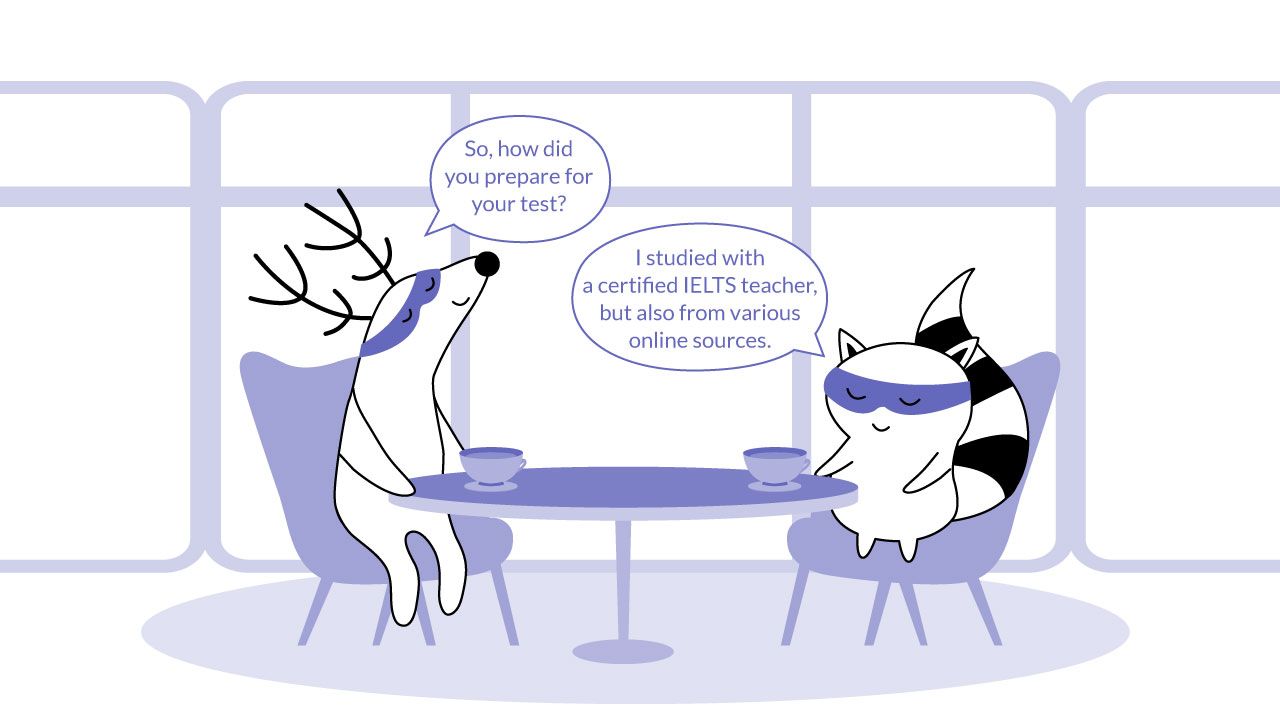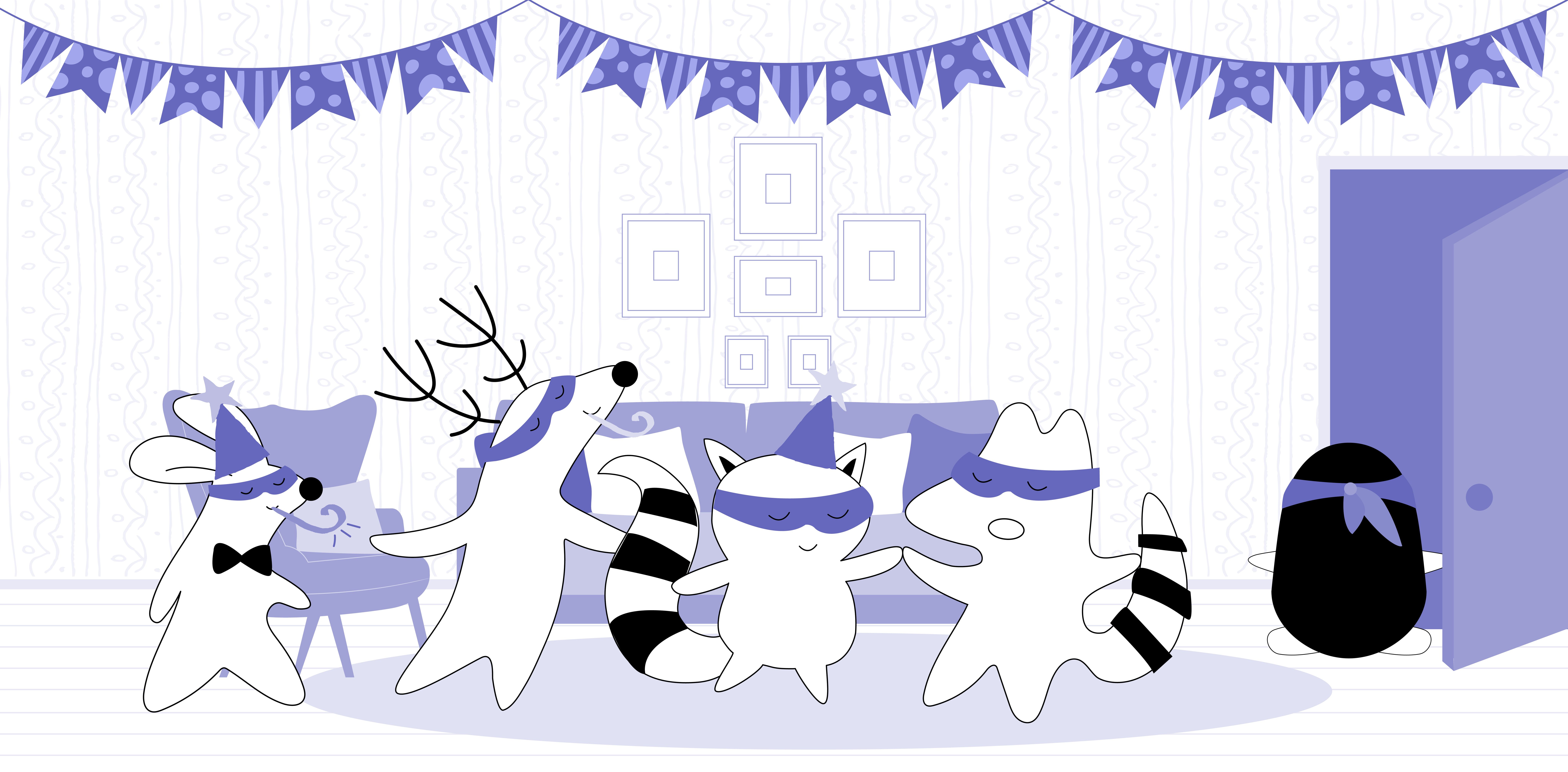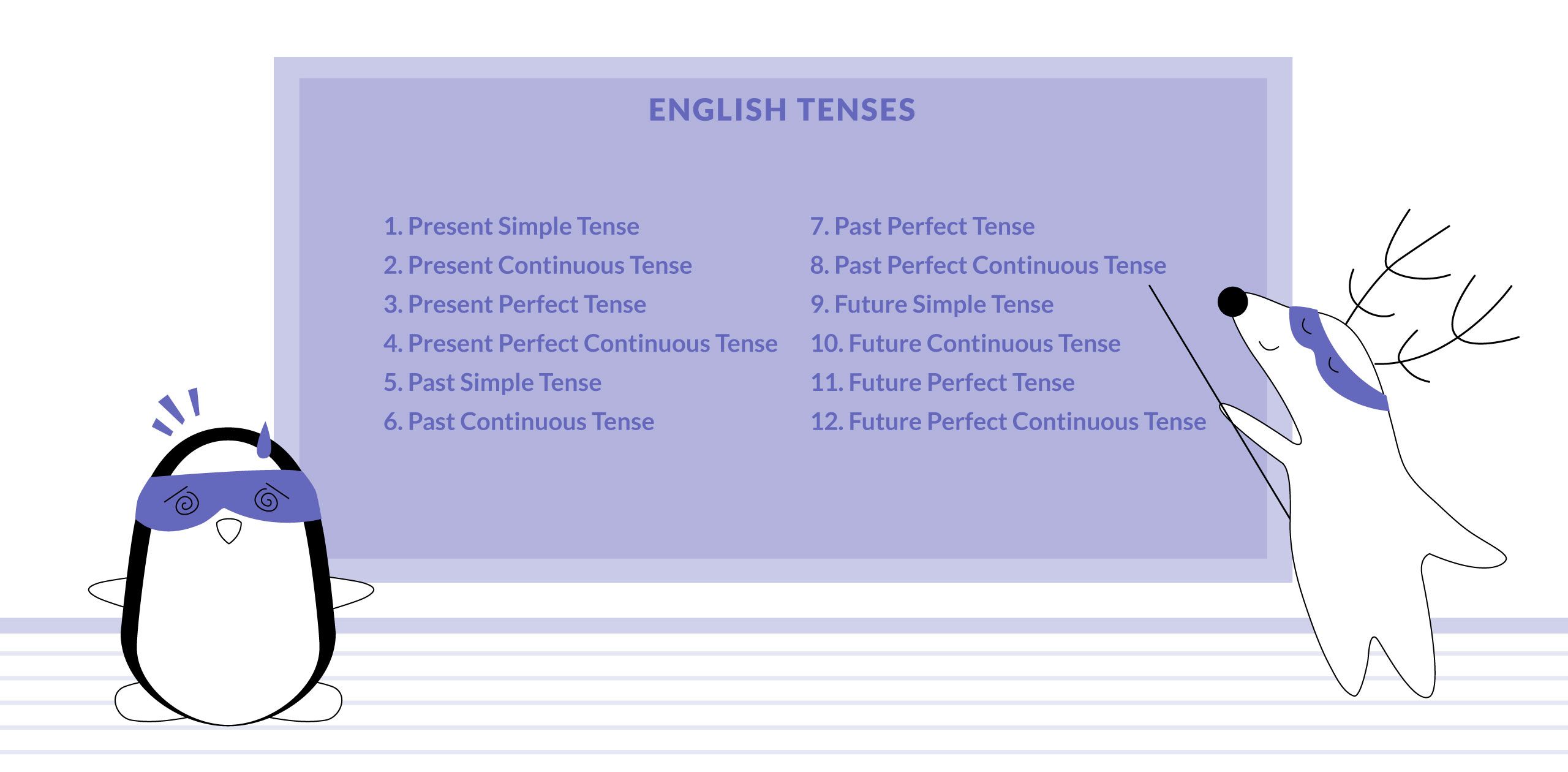
There are three main verb tenses in English: past, present, and future. Each of these tenses can take four aspects: simple, perfect, continuous (also known as progressive), and perfect continuous.
This makes it twelve verb tenses, and each one has a specific use. You don’t need to be familiar with all of them in order to correctly communicate in English, but knowing these can clarify a lot. While understanding every single one of them and learning all the verb conjugation rules might seem close to impossible, we’re here to help.
In this article, we will highlight all English tenses and provide rules and examples of how they can be used. Keep reading and master your English grammar!
Learn English with Langster
Present Tenses
We use present tenses to describe actions that take place in the present, happen repeatedly, or follow one after another. To help you avoid confusion, here is an overview of the English present tenses:
Simple Present
The simple present tense, which is also called present simple or present tense, is used to describe an action that happens regularly, talk about an action that is on a schedule, or state facts.
One of the most common ways to use the simple present tense is to pair it with time expressions of frequency such as always, never, and every day.
To form the simple present, you need to use the base form of the verb and add an -s/-es to verbs in the third person singular (he, she, it), otherwise the verb does not change. Modal verbs never take an -s.
Structure: subject + verb (+s/-es)
Here are some examples of the simple present tense in action:
- I play tennis every day.
- The train arrives at the station at 8 p.m.
- We watch a movie every week.
Present Continuous
The present continuous tense, also known as present progressive, is used to describe an ongoing action that is happening now or an action that will happen in the future.
It is often used with immediate time expressions such as now, at the moment, Look!, and Listen!
To form the present continuous, you need to use the auxiliary verb to be in the present tense followed by the present participle (-ing form) of the main verb.
Structure: subject + am/is/are + verb +ing
That might seem complex, but it’s easier to understand when you see it. Here are some examples of the present continuous verb tense conjugation:
- I am studying for my exams now.
- She is watching TV.
- We are having a great time.
Present Perfect
The present perfect tense is used to describe an action that happened at some point in the past or an action that happens regularly.
You often use it with past time expressions such as already, ever, and just.
To form the present perfect, you need to use the auxiliary verb to have in the present tense followed by the past participle of the main verb.
Structure: subject + have/has + V3
Here are some examples of the present perfect tense in action:
- I have played tennis.
- He has arrived at the party.
- We have watched a movie.
Present Perfect Continuous
The present perfect continuous tense, or present perfect progressive, is used to describe an ongoing action that started in the past and is still happening or an action that will happen in the future.
You can spot it because it goes with continuous time expressions such as for, since, and so far.
To form the present perfect continuous, you need to use the auxiliary verbs to have been in the present tense followed by the present participle (-ing form) of the main verb.
Structure: subject + has/have +verb +ing
Take a look at the present perfect continuous tense in action:
- I have been studying for my exams for two hours.
- She has been watching TV for an hour.
- We have been having a great time for weeks.

Past Tenses
We use past tenses in English to talk about actions and events that have already happened. Here is an overview:
Simple Past
The simple past tense, which is also called the past simple, the past tense or the preterite, is used to describe an action that took place in the past and is now completed.
It is often used with time expressions of the past such as yesterday, last week, or two years ago.
To form the simple past tense, you need to add -ed to regular verbs. For irregular verbs, you need to memorize the conjugation rules.
Structure: subject + verb +ed/V2
Here is how conjugate English verbs in the simple past tense:
- I played tennis yesterday.
- He was late to the party.
- We watched a movie last week.
Past Continuous
The past continuous tense, or past progressive, describes an action that was happening at a specific time in the past or was interrupted by another action. It is one of the most frequently used progressive tenses in the English language.
It is often formed using time expressions of continuation such as when, while, or before.
To form the past continuous, you need to use the auxiliary verb to be in the past tense followed by the present participle (-ing form) of the main verb.
Structure: subject + was/were +verb +ing
Here are some examples:
- I was studying for my exams when she called me.
- They were watching TV when the power went out.
- We were having a great time before you showed up.
Past Perfect
The past perfect tense, also referred as *tense, is used to describe an action that was completed before another action in the past.
It is often used with time expressions that show order of events such as after, before, and when.
To form the past perfect, you need to use the auxiliary verb to have in the past tense followed by the past participle of the main verb.
Structure: subject + had + V3
Here is the past perfect tense in action:
- I had studied for my exams before she called me.
- She had watched TV before the power went out.
- We had seen this movie at the cinema before it was released on the streaming platform.
Past Perfect Continuous
The past perfect continuous tense, also past perfect progressive, is used to describe an ongoing action that was happening before another action in the past.
It is often used with time expressions of continuation such as for, since, and before.
To form the past perfect continuous, you need to use the auxiliary verbs to have been in the past tense followed by the present participle (-ing form) of the main verb.
Structure: subject + had been + verb +ing
Here are some examples of the past perfect continuous tense in action:
- I had been studying for my exams for two hours when she called me.
- She had been watching TV for an hour when the power went out.
- We had been having a great time for weeks before going back to school.

Future Tenses
We use future tenses to describe a future event or state of being. This part of English verb tenses is perhaps the most challenging for beginning English learners. Even native speakers seldom refer to some of the aspects of future tense in English.
Nonetheless, you’ll need to get familiar with this grammar if you want to master your writing skills and advance in your spoken English. So, here is a summary of each of them:
Simple Future
The simple future tense, or future simple, is used to describe an action that will happen in the future.
It is often used with future time expressions such as tomorrow and next week.
You can form the simple future in two ways – either by adding the auxiliary verb will to the infinitive of the main verb or by using the auxiliary verb to be in present simple, followed by the going to and the infinitive of the main verb.
Structure 1: subject + will + verb
Structure 2: subject + am/is/are + going to + verb
Here are the examples of the simple future tense:
- I am going to play tennis tomorrow.
- We will go to the cinema next week.
Future Continuous
The future continuous tense, also future progressive, is used to describe an ongoing action that will be in progress at a future time.
It is often used with specific time expressions such as at 9 o’clock tomorrow and this time next week.
To form the future continuous, you need to use the auxiliary verb to be in the future tense followed by the present participle (-ing form) of the main verb.
Structure: subject + will be + verb +ing
Here is the future continuous tense in action:
- I will be studying for my exams tomorrow.
- They will be watching TV tomorrow night.
- We will be having a great time at this time next week.
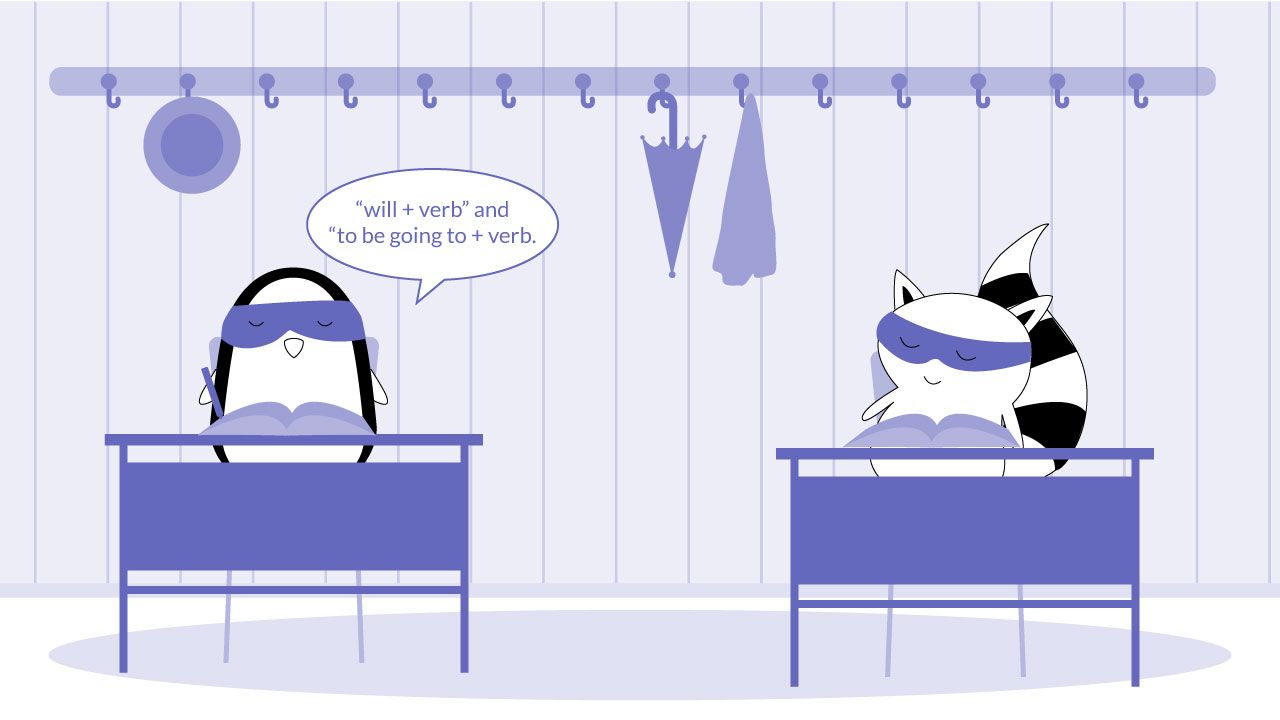
Future Perfect
The future perfect tense is used to express that an action will have been completed by a certain future time.
It is often used with specific time expressions such as by, before, and in a week.
To form the future perfect, you need to use the auxiliary verb to have in the future tense followed by the past participle of the main verb.
Structure: subject + will have + V3
Here are some examples of the future perfect tense in action:
- I will have played tennis by the time you arrive.
- They will have arrived at the party before 8 p.m.
- We will have watched a movie by next week.
Future Perfect Continuous
The future perfect continuous tense, also known as future perfect progressive, is used to emphasize the progression and duration of an action that is currently in progress but is expected to end by a certain time in the future. We use this future tense to look back at a past action from a future point in time.
It is often used with time expressions such as by this time and for hours.
To form the future perfect continuous, you need to use the auxiliary verbs to have been in the future tense followed by the present participle (-ing form) of the main verb.
Structure: subject + will have + verb +ing
Here are some examples of the future perfect continuous tense in action:
- When you wake up, I will have been studying for my exams for six hours.
- They will have been watching TV for several hours by the time we get home.
- We will have been having a great time for weeks by the time summer is over.
Don’t worry if the future perfect continuous doesn't come easily. It doesn’t show up a lot in either speech or writing.
The Bottom Line
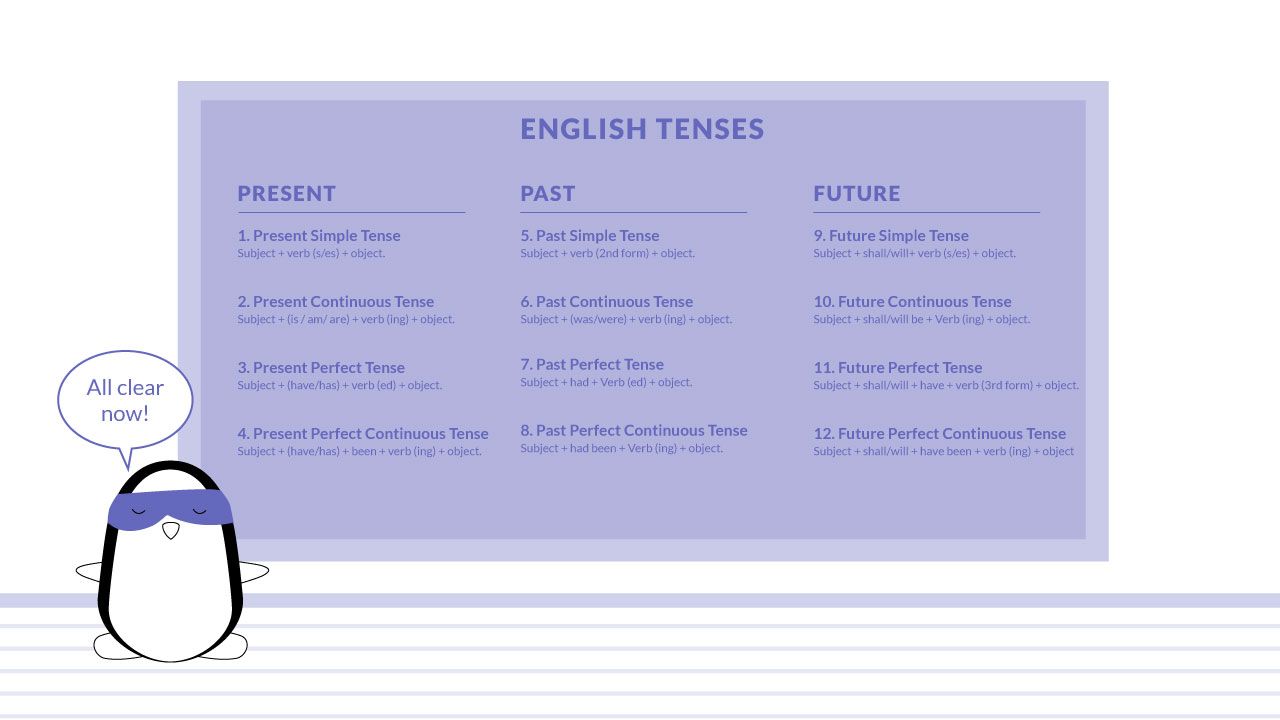
And there you have it – twelve English verb tenses, each with its own uses and conjugation rules! You don’t need to know these to communicate in English, but they’ll massively improve your writing.
It is completely okay not to remember all the rules by heart. So, don’t hesitate to revise this page and our Grammar section when you have doubts on which one to choose in a particular context.
If you want to improve your communication skills in English, make sure you download our Langster app and practice using all of the tenses. Good luck!







